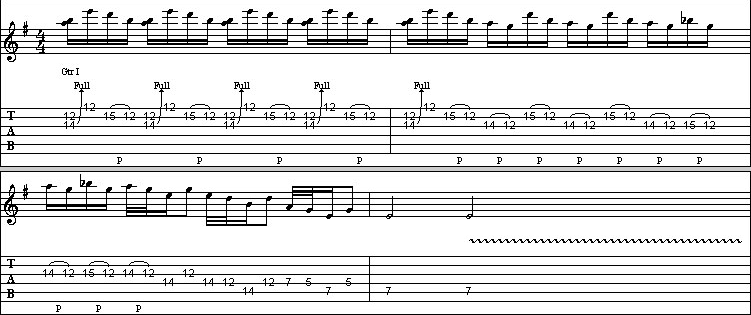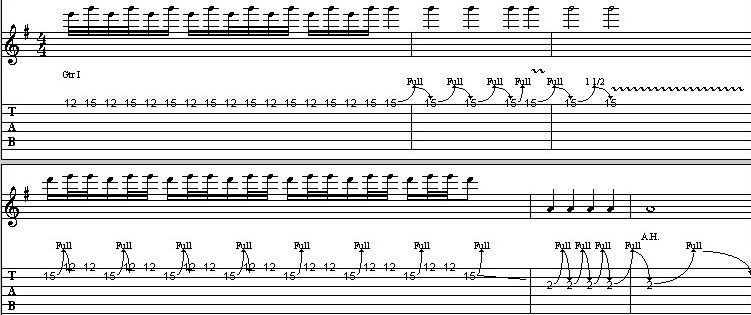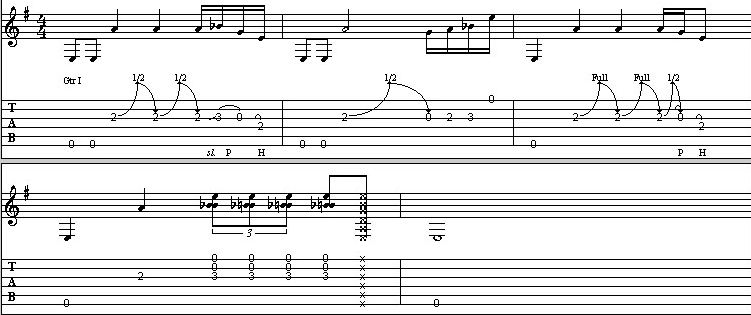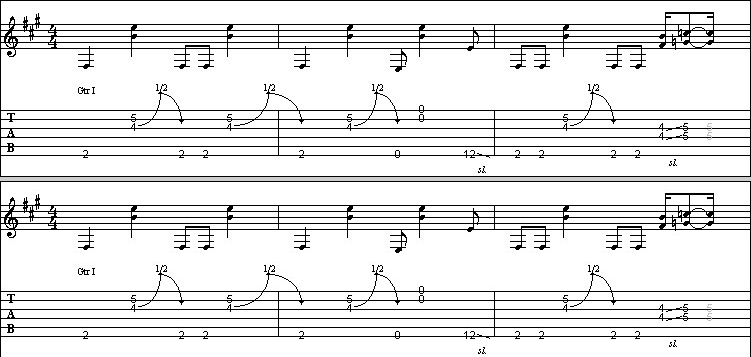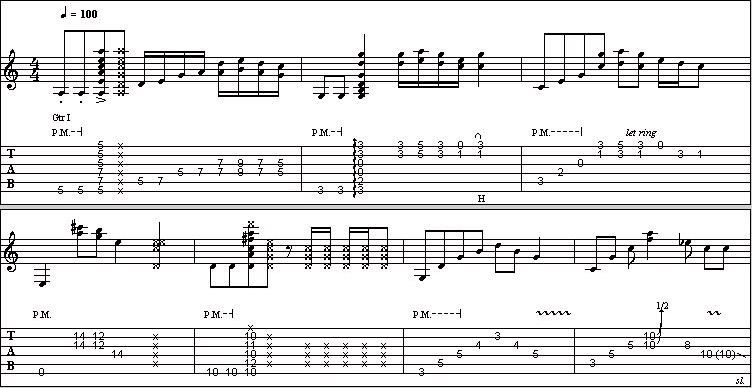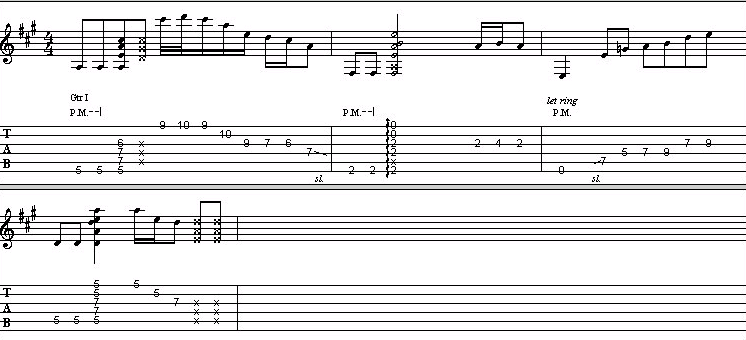The final installment....
Jimi Hendrix Blues-based licks
by David M. McLean
Here are some burning blues runs similar to what Jimi utilized in songs like "Purple Haze" and "Foxey Lady". They are all based on the pentatonic minor and these sorts of blues-rock licks set the pace for guitar players to follow. Example one uses a rapid-fire bend & pull simile followed by some quick descnding pull-offs. Notice the "blue note" (flatted 5 in bars 3 & 4) and the quick shift from the 12th position to the 5th position at the end of bar 3. Finally, be sure to play the opening licks freely, rather than perfectly as written.
Example two: The beginning of this example is notated to imply the speed changes Hendrix was noted for. That is, he'd play in free-time over the band, then jet back in and play in perfect time. Don't play bar one as notated, then, but with a free feel. Just be sure to hit bar #2 right in the pocket. Bar 4 can be played either as written or freely, depending on how close you want the call & response effect. Note in the final bar that you can almost hear how Jimi would start calling up the feedback and bashing on the whammy bar!
Have fun with these licks and then apply some of the free-time concepts to your own playing within - or outside of - the blues framework and see what you come up with. See ya next time!
=====
(January 2004) Index
